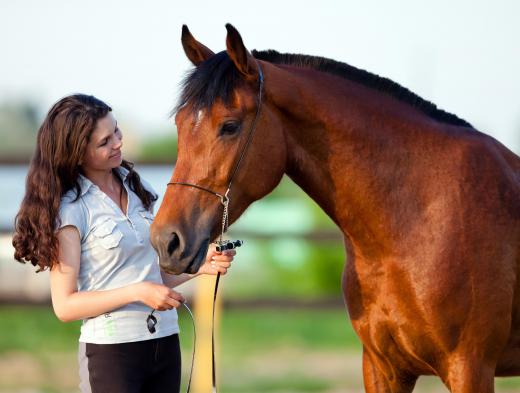Equestrian vaulting is an equestrian sport which combines dance, gymnastics, and horsemanship. Participants in equestrian vaulting perform a variety of gymnastics moves on the back of a moving horse, either individually or in teams. Vaulting, as it is sometimes called, is practiced all over the world, with German vaulting teams being particularly famous, and a wide variety of horse breeds are used in vaulting.
The history of vaulting is ancient, and it may well be one of the oldest equestrian sports. Evidence in art suggests that people have been performing gymnastics on moving horses since at least 1,000 CE, and the Romans integrated a form of vaulting into their cavalry training. Equestrian vaulting continues to be practiced by modern cavalry and mounted law enforcement officers, as a way of making riders confident and secure on their horses and to create a bond between horses and riders.

In vaulting, the horse is controlled by a longeur, a person who stands in the middle of the ring holding a long line known as a longe line. The athlete performs a variety of moves, including mounts and dismounts, on the back of the horse as the horse walks, trots, or canters around the longeur. In addition to being a good horseman, the human athlete must also be extremely flexible and strong, able to perform challenging gymnastics moves while on a moving object. Vaulting gets even more complex when a team of riders is involved.

The competitive vaulting circuit showcases some of the best equestrian vaulters, and demonstration vaulting is commonly featured at parades, circuses, and other events, as the sport is quite visually interesting in addition to being physically challenging. Some riders like to practice equestrian vaulting recreationally, both because they find it enjoyable and because they believe that it is beneficial to a training regimen for rider and horse.
In addition to being used for entertainment, equestrian vaulting is also a vital part of some equine-assisted therapy programs. The sport encourages the development of strength, flexibility, and confidence, all traits which equine-assisted therapy aim to promote, and patients in physical and behavioral therapy often benefit from contact with animals such as horses on a psychological as well as physical level. Therapeutic vaulting is less physically demanding than some other forms, but it can still be a very good workout, challenging the rider to his or her limits and encouraging the development of a strong, healthy body.
